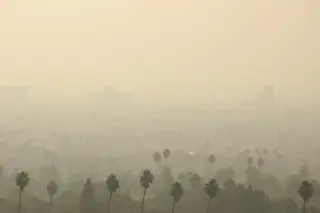Josh Margolis keeps a grueling schedule, brokering deals between buyers and sellers and forecasting how government actions could affect his clients. But his obsession is not stocks, or bonds, or oil futures. As co-CEO of the San Francisco–based company CantorCO2e, Margolis is part of an exploding branch of finance in a new commodity: carbon.
Mainstream financial institutions including Merrill Lynch, J.P. Morgan, Deutsche Bank, and Goldman Sachs are joining the booming carbon market, which continues even through the current economic jitters. According to the World Bank, global trades in this market in 2007 were valued at more than $64 billion, more than doubling since 2006. Skip Willis, president and CEO of Carbon Capital Management, a Toronto-based “carbon monetization” corporation, predicts that by the end of 2008 the global carbon trading system will have topped $100 billion. “This is a market that barely existed five years ago,” Willis says.
The carbon ...















